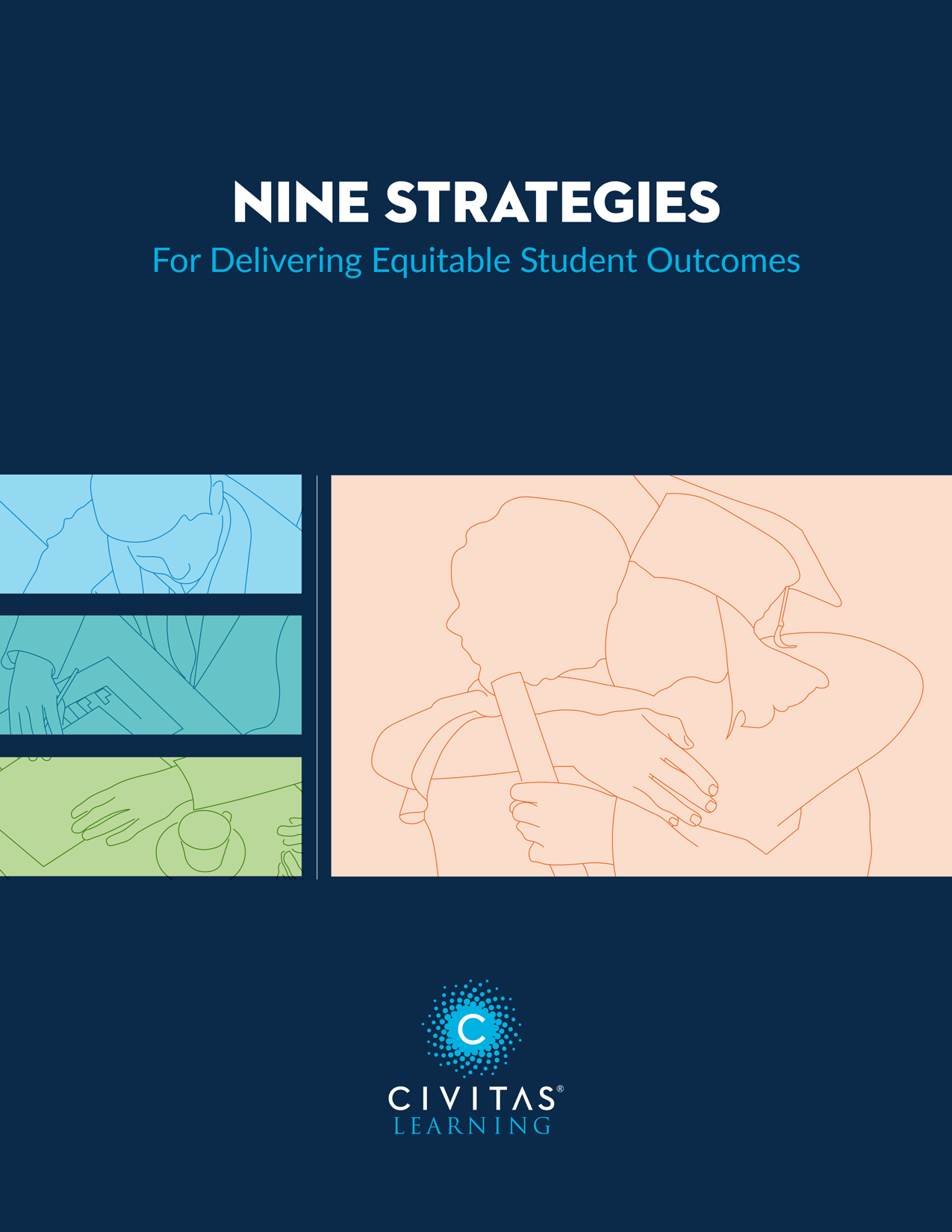
Community College Leaders on Equity and Access in Higher Education
Share this Post
Insights from DREAM 2022: Achieving the Dream’s 18th Annual Conference
The pandemic disrupted business as usual for higher education, leaving institutions without a clear roadmap of historical trends, best practices, and benchmarks to find their way forward to a new normal. Hard-fought, pre-pandemic gains in enrollment, retention, and equitable access to higher education have largely eroded due to the enormous challenges institutions have faced over the last two years.
Recently during DREAM: Achieving the Dream’s Annual Conference, community college leaders unpacked lessons learned from the early days of the pandemic and explored emerging trends in student enrollment and success. Here are three key takeaways shared by enrollment management and student success leaders representing Lorain County Community College and Austin Community College:
- Virtual Support Services Increase Access and Are Here to Stay
- Data and Technology Must Provide Real-Time Insights as Trends Continue to Evolve
- Existing Equity Gaps Have Widened and New Opportunities to Engage Students Are Emerging
1. Virtual Support Services Increase Access and Are Here to Stay
Dr. Marisa Vernon White, Vice President for Enrollment Management and Student Services at Lorain County Community College, recalls being surprised by the immediate technology needs of LCCC students when in-person courses shifted online during the early stages of the pandemic.
Before the pandemic “We had periodically asked our students, ‘Do you have the technology you need?’ and they were saying ‘Yes, absolutely.’ And then we learned that what they meant by technology was using their cell phones and connecting to wi-fi in parking lots of closed restaurants,” Vernon White says. “One of our biggest takeaways is being more explicit with students about what technology it takes to fully engage in classes and campus community.”
Despite this early barrier to remote learning, community college leaders acknowledge that expanding hybrid and online instruction increases access to higher education. Community college students’ complex lives and schedules demand the flexibility and accessibility that online learning provides.
With more students opting for online courses, colleges must expand virtual access to campus resources. Austin Community College has formed a workgroup to steer these efforts. “We were of the mindset that we had to provide everything in person, so we always had a waiting list for mental health services,” says Dr. Ruth Reinhart, Associate Vice Chancellor for Student Support Services at ACC. “The pandemic showed us how to support students differently. So we’re looking at expanding how we support the virtual student.”
It’s not just a matter of replacing in-person services with online options. Students want to choose which services they access in-person and online, creating a challenge for institutions already functioning in a resource-constrained environment. Sustainably offering personalized student support to in-person, hybrid, and remote learners will require creative, data-informed solutions. Data suggests that doing so may provide a promising way to move the needle on equitable outcomes in higher education.
2. Data and Technology Must Provide Real-Time Insights and Trends Continue to Evolve
As higher ed leaders search for a new normal, they do so in a constantly changing environment. Previously meaningful benchmarks no longer provide adequate insights to anticipate students’ needs. Institutions continue to respond to evolving pandemic safety guidelines that impact how they deliver classes and how students engage on campus. Enrollment declines produce financial constraints that demand precise and strategic resource allocation.
Technology tools that provide real-time data and insights help leaders respond with fluidity as trends evolve. Leaders who can monitor and analyze current trends in student behavior make more informed decisions about the initiatives and services that best support students. Accessing real-time engagement and behavioral data for individual students allows advisors and other support staff to proactively connect students to the resources they need.
Responding quickly and accurately to changing student needs requires improved workflow and communication tools to empower staff to deliver holistic and coordinated student support. Student success teams need a complete picture of each student’s progress—updated daily with relevant data—to ensure the effectiveness of each interaction.
Community college leaders will continue to leverage data to inform action and measure impact. A sophisticated and layered approach to data collection and analysis is key to making the most relevant and impactful decisions.
3. Existing Equity Gaps Have Widened & New Opportunities to Engage Students Are Emerging
In the wake of the pandemic, the enrollment declines experienced across higher ed institutions have disproportionately affected community colleges. Their students tend to have more complex circumstances impacting their ability to access and persist in higher education. Unfortunately, these enrollment declines have widened the existing equity gaps among marginalized student populations. Community college leaders will work for years to regain these losses.
Dr. Vernon White and Dr. Reinhart identified three distinct groups their institutions are focusing on that offer unique opportunities to regain some lost ground.
In spring 2020, the pandemic abruptly forced in-person students into online classes. That semester was incredibly tumultuous for students and colleges alike. Many students did not enroll the following term and have yet to return. LCCC is working to re-engage these students and encourage them to complete their educational goals.
A second group is the so-called “lost generation”—the graduating high school class of 2020— many of whom delayed enrollment or decided not to attend college. While experts cite lost confidence in higher education as the underlying cause, community college leaders hope these individuals will choose to pursue higher education sooner rather than later and are positioning their institutions to attract and serve this group in the semesters to come.
ACC is focusing efforts to reach and retain male students, whose attendance rates at community colleges were at their lowest in fall 2020 and spring 2021. Unfortunately, the lowest rates are among black and Latino male students, putting this trend at the forefront of the minds of equity-focused leaders.
While the pandemic eroded prior equity gains, community colleges like LCCC and ACC are focused on regaining lost ground and realizing future progress. To pursue this critical work, they need the ability to disaggregate and analyze data by sub-population to determine which student success strategies have the most impact on persistence and completion for specific student groups.
A Sustainable Community College Recovery Leads to Recovery for Individuals & Communities
Community colleges—with missions closely calibrated to the workforce and educational needs of local communities—are uniquely positioned to observe and respond to the direct impact of the pandemic on the lives of their students and the ripple effect of these challenges on the local community. They’re also essential resources for individuals and communities to recover from these disruptions.
Leaders of colleges like Lorain County Community College and Austin Community College know that their commitment to student success impacts the lives and economic outcomes of individuals, families, and their local communities. As the post-pandemic higher education landscape evolves, leaders need data-informed approaches to anticipate student needs, respond with clarity and precision and lead their institutions to more equitable student outcomes.



